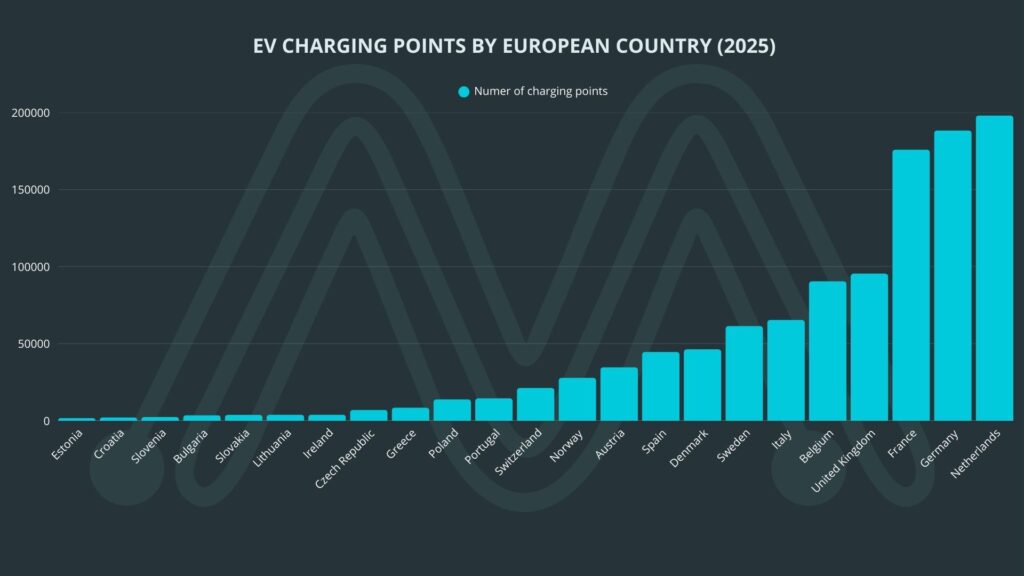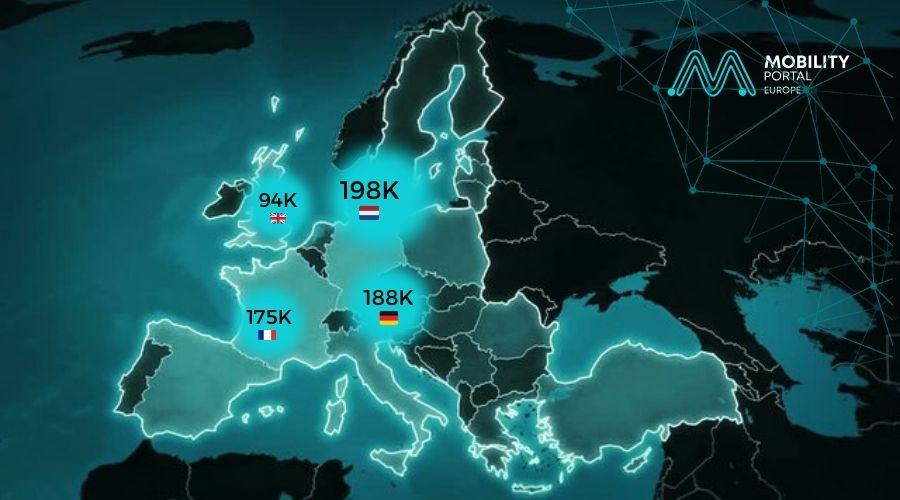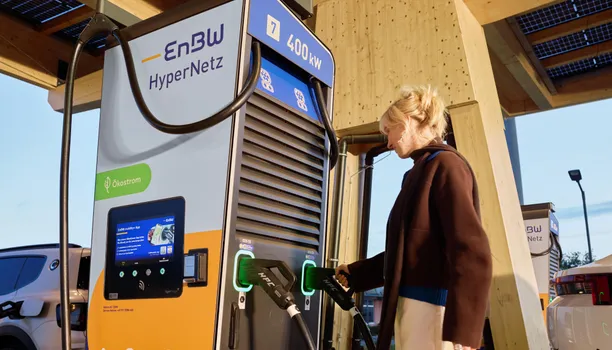The European Union recently surpassed one million public electric vehicle (EV) charging points, marking a key milestone in the race towards zero-emission mobility.
In fact, according to the latest data from the European Alternative Fuels Observatory (EAFO), the total number of publicly accessible points across the continent has reached 1,148,062.
Of these, 941,953 are alternating current (AC) and 206,109 are direct current (DC).
However, the growth is not evenly distributed. While some nations concentrate a significant share of this infrastructure, others are only just beginning to develop their networks.
Below, Mobility Portal outlines how this rollout is distributed and what strategies are emerging across the region.

Top 5 countries with the highest number of charging points
The Netherlands tops the list with 198,029 points, of which 192,063 are AC and 5,966 are DC.
This reflects the country’s expansion strategy, which focuses on a high density of slow chargers.
It is worth noting that the Netherlands’ figures contribute significantly to the total installed infrastructure in the EU, accounting for almost 20% of the overall network.
Germany ranks second with 188,338 points. The country stands out for its balanced and robust approach to fast charging, with 144,432 AC and 43,906 DC units, positioning it as one of the key players in high-power charging.
France takes third place with 175,873 units, comprising 140,312 AC and 35,561 DC chargers. Like Germany, it has a well-balanced and steadily expanding network.
Together, these three countries account for over 45% of all public chargers in Europe, highlighting a strong concentration of infrastructure in the north-western region of the continent.
In fourth place is the United Kingdom, with 94,952 points, comprising 76,948 AC and 18,004 DC units.
Meanwhile, Belgium ranks fifth, with 90,517 devices, including 84,237 AC and 6,280 DC devices.
Countries with the highest proportion of fast charging
While several countries have invested in dense networks of slow chargers, such as the Netherlands, others have prioritised the rollout of fast devices, which are essential for interurban travel and efficient charging times.
Norway stands out as the country with the highest proportion of fast chargers in its total network. Of the 27,871 available points, 10,349 are DC, representing 37.2% of the total. This approach has been key to Norway’s high electric vehicle adoption, focusing on efficiency and territorial coverage rather than volume alone.
Germany also shows a significant proportion of fast charging: 23.3% of its stations are DC, reaffirming its technological leadership and strategy focused on high-speed charging corridors.
In the case of Spain, there are 44,683 points, with 34,110 AC and 10,573 DC, meaning that 23.6% are fast chargers.
Although it sits around the European average in terms of total volume, the proportion of fast charging places Spain ahead of other economies with larger networks.
France, meanwhile, maintains 20.2% of its infrastructure as fast charging. While this is lower than in Norway or Germany, it remains a significant figure within the European landscape.
Countries with limited infrastructure
While major powers are advancing with large-scale rollouts, some countries still show limited levels of infrastructure, both in quantity and territorial coverage.
Among them, Estonia, Croatia, Slovenia and Bulgaria stand out, with figures that contrast sharply with the continent’s leading nations.
Estonia has the lowest number of installed charging points, with a total of 1,663 units, consisting of 800 AC and 863 DC devices.
Croatia has 2,221 chargers, of which 1,360 are AC and 861 are DC.
Slovenia reports 2,508 points, including 1,989 AC and 519 DC units.
Finally, Bulgaria has 3,631 chargers, with 2,127 AC and 1,504 DC.
A striking detail is that in many of these countries, the number of fast chargers (DC) equals or even exceeds that of slow chargers (AC).
This may indicate a strategy focused on a less dense but more efficient infrastructure, likely in response to budget constraints or low demand, yet aiming to reduce charging times and compensate for limited coverage.
DISCOVER MOBILITY PORTAL DATA
Explore Mobility Portal Data, a new exclusive market intelligence platform offering reliable data and key reports to support smart decision-making across the entire automotive sector — covering both combustion and electric vehicles as well as charging infrastructure.
Research, trend analysis, and well-structured statistics are presented with clarity and precision, along with up-to-date insights, all just a click away.
With Mobility Portal Data, the best decisions are just around the corner.
READ MORE
-
chargecloud Expands Marketplace with AI-Based Support: Cooperation with Lemonflow Technologies
The integration brings 24/7 AI-powered user support, fully embedded into the chargecloud ecosystem, aiming to enhance operational efficiency and service quality for CPOs across Europe.
-
EV transition in Europe slows, but momentum remains after EU climbdown
EU policy flexibility may ease short-term pressure on automakers, yet rising EV sales, infrastructure needs and long-term investment signal that electrification remains the industry’s core trajectory.
-
EnBW and Alpitronic strengthen long-term partnership to scale high-power charging across Germany
The agreement covers fast-charging hardware, joint development of future functionalities and a multi-year maintenance framework to support EnBW’s expanding HPC network.











